Laborious and prolific painter Yannis Stinis (Athens, 1914–2001) (fig. 1) produced works that reveal his interest in the lively representation of the Greek landscape. Stinis was also a printmaker and banknote designer, belonging to the artistic staff of the Bank of Greece Printing Works (National Mint/IETA) that contributed, from 1940 onwards, to the development of the art of the national banknote in Greece.
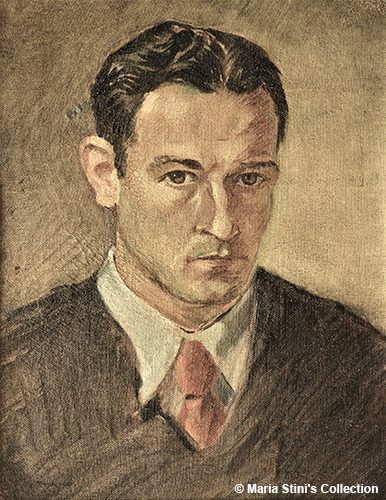
A graduate of the Athens School of Fine Arts (1937-1945), Stinis at the beginning of his career chose his subjects to spring from the work he was assigned to do – while working at the technical office of the Red Cross, for example. During the two years (1943–1945) he spent there, he painted watercolours themed around his job, which related to the drafting of statistical tables and architectural drawings for buildings and warehouses. In the same vein, from the mid-1940s onwards, Stinis produced small-scale depictions of various parts of the Kerameikos site in Athens. These depictions of archaeological remains in the calm atmosphere of the Athenian cemetery document his work for the German Archaeological Institute (figs. 2 and 3).
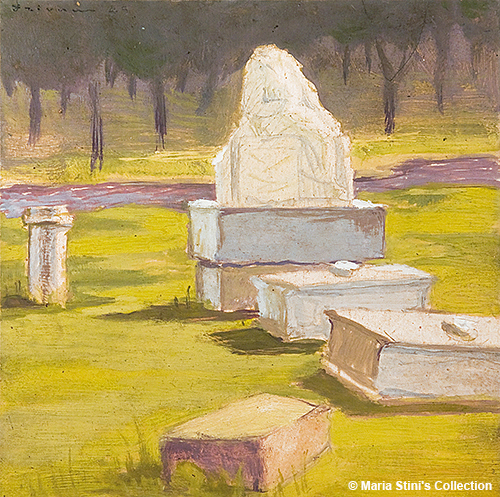
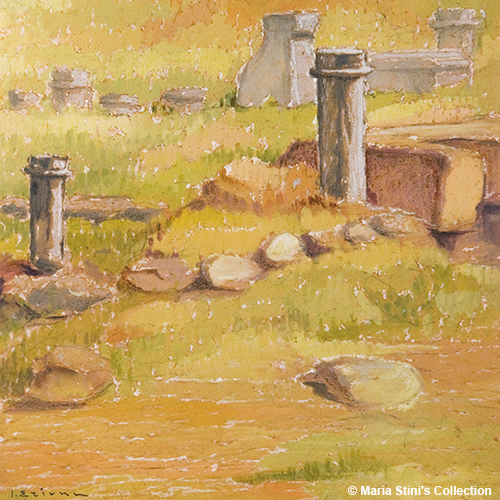
Yannis Stinis worked as a drawing artist for the German Archaeological Institute during two separate periods: 1937–1943 and 1956–1970. During the German Occupation, he initially worked in the excavations by the DAI in Aegina and Crete, under the supervision of Franz Gabriel Welter, and then mostly in the excavation at the Kerameikos area in Athens, under Karl Kuebler and his assistant Kurt Gebauer. At Kerameikos, he lodged at an expropriated property within the site, in order to be able to keep up with excavation developments in real time. His work there included measurements, drawings on the restoration of monuments and all kinds of findings within the site (vases, inscriptions, burials; figs. 4 and 5).
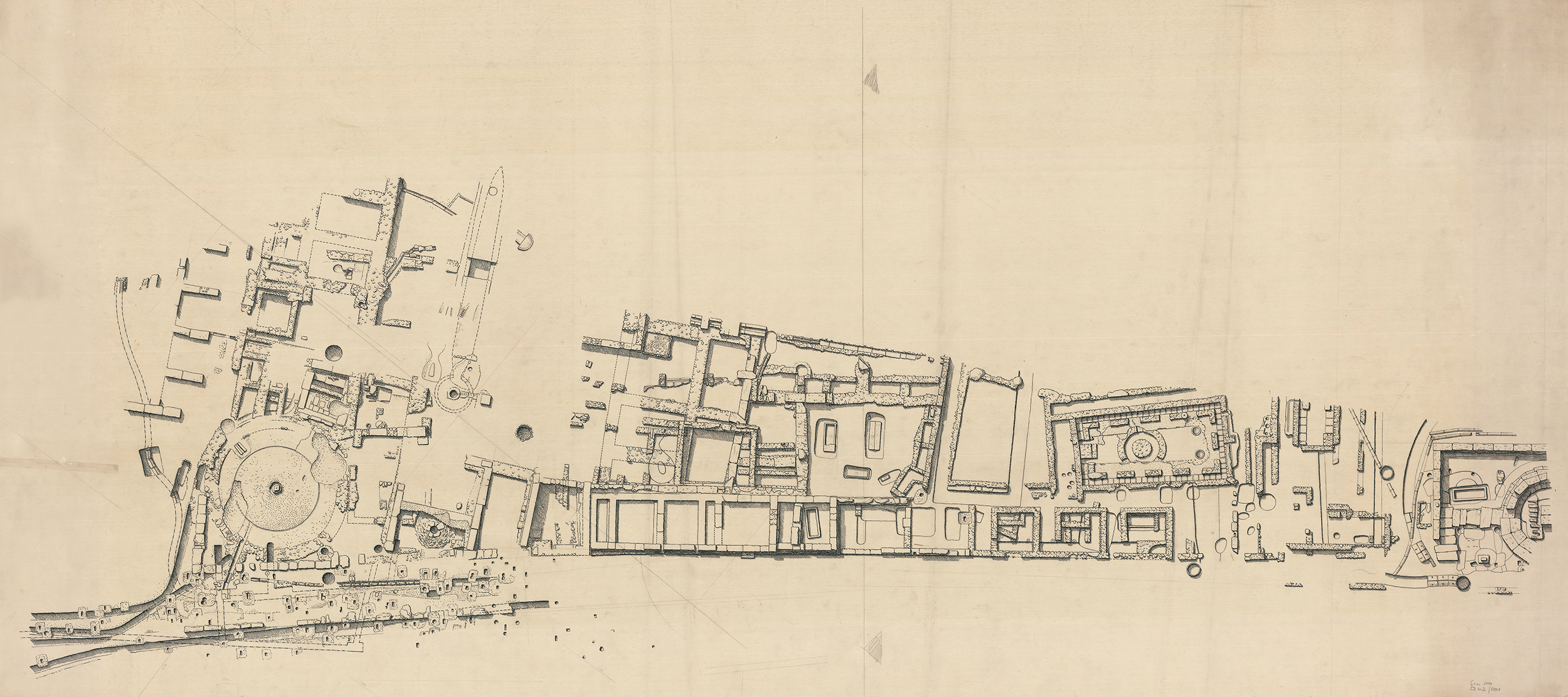
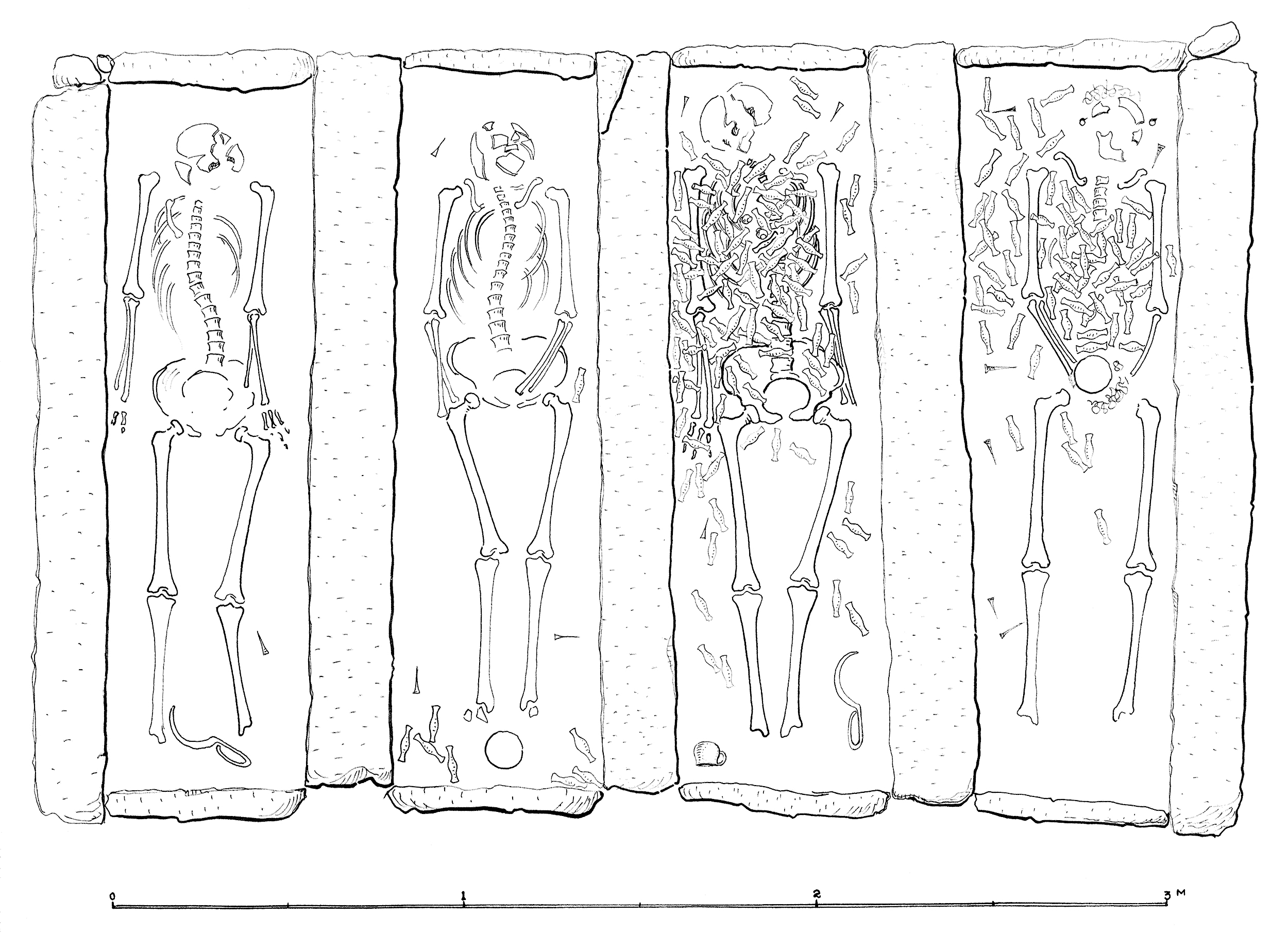
In this particular endeavour, Stinis excelled because of the painstaking precision of his drawings; his site plans were not only faithful to the dimensions of the monuments but also enriched with subtle shadings, which provided depth and perspective. At the same time, his depictions of relics and funerary objects, epigraphical scriptures and layouts for vase figures were notable for their meticulous detail. The experience that Stinis gained from this work enhanced his drawing skills further, something that proved an asset, especially in connection to his later employment in banknote design. More work of his for the German Archaeοlogical Institute after WW II included designs for an article on Kimolos, presented in the Athenische Mitteilungen (fig. 6), as well as the general plan of the DAI’s excavation site in the Kabireion, near Thebes.

Stinis was employed at the Bank of Greece, following an open call, in 1949. His work there included the drafting of preliminary designs and of engravings, tasks in which he distinguished himself for his inventiveness and attention to detail. In these compositions, Greek antiquity was again present; drawing his themes from it, he tastefully combined them with other themes from Greece’s modern history, instilling in the combination artistic flair and aesthetic perfection.
Of particular mention, is his work for the 50-drachma banknote (first printed on October 1st, 1964 and put into circulation on April 19th, 1965). Its obverse features the head of Arethusa, taken from the Syracuse tetradrachmon, surrounded by dolphins. Also, the reverse of the 100-drachma banknote (first printed on July 1st, 1966 and put into circulation on November 1st, 1967) depicts the building and the surroundings of the Athens Academy. Stinis also designed both sides of the 1,000-drachma note (printed on November 1st, 1970 and put into circulation on January 4th, 1971): On the left part of the obverse, he depicted Zeus of Artemision, placing the Epidaurus Theater at the centre; the reverse, he themed around a maiden from Hydra island and a view of its harbour.
Stinis also worked on two of the last drachma banknotes that were put into circulation by the Bank of Greece during 1980–1998. These are the 50- and 100- drachma notes, for which he prepared preliminary designs for both sides. The 50-drachma note (first printed on December 8th, 1978 and put into circulation on July 16th, 1980) featured, on the left part of its obverse, the head of Poseidon taken from a 4-drachma coin dating back to the time of Antigonus III Doson of Macedonia and, on the lower right part, the construction of the mythical Argo ship. The reverse is the reproduction of a close-up from a lithograph by the German painter Peter von Hess titled Bouboulina at the siege of Nafplion (spring 1821), with the addition by Stinis of further naval ships on the background. In designing the 100-drachma banknote (first printed on December 8th, 1978 and put into circulation on May 18th, 1981), Stinis chose again to combine ancient with modern themes, thereby remaining true to the tradition of Greek banknotes featuring persons and elements from different historical eras. On the left part of the obverse, one can see Athena Promachos from the Piraeus Archeological Museum and, on its lower part, the central building of the University of Athens. On the left part of the reverse, there is the reproduction of a portrait of Adamantios Korais from the National Historical Museum (with the portrait’s original angle changed from left to the right) and, on the right part, a depiction of the Arkadi Monastery in Crete.
As regards his independent artistic oeuvre, Stinis devoted himself almost exclusively to rendering the Greek landscape. In doing so, he attempted a personal style that is rooted in a realistic take on outer characteristics but extends to an esoteric manifestation, the details of which agitate an interpretation. More often than not, his landscapes bear a portrait-like quality, their creation sprouting from personal experience, a meditative mood or feelings. At the same time, they make an impression that emanates from the painter’s choices of colour and shading, which convey a now dynamic and at other times poetic and nostalgic energy.
Characteristic examples of Stinis’s artworks include Plaka (1946), which features the traditional Athenian neighbourhood (fig. 7), with its low houses climbing up the slope on the left part of the canvas. The most prominent colours are the white of walls and the terracotta of roof tiling, with green sporadically interjecting to finally dominate the background. On the first level of the painting, three human figures enliven the scene, which is made livelier by the bright light of daytime.
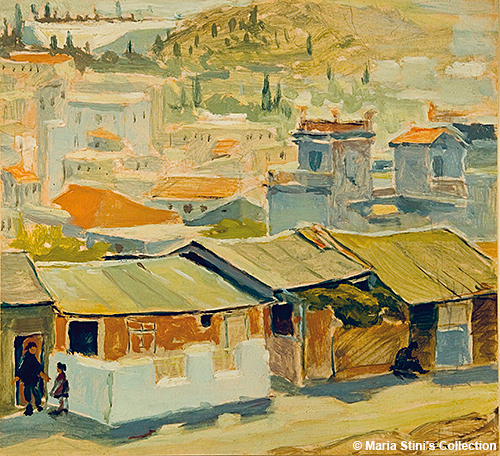
From the beginning of the 1950s, Stinis became increasingly preoccupied with island landscapes. A typical work in this strand is Serifos (1952), in which the bright landlines impose a certain linearity on the space of the painting, while winding up to the sea, where the few bathers are portrayed with abstract colourful brushstrokes (fig. 8). The painter’s brush alternates between cold and warm tones, while staying true to his commitment to realistic representation. Sea gulfs, stretches of land, mountain masses and buildings are depicted with minimal outlines, the focus falling on colour instead; thus, colour emerges as a structural and descriptive element. As time goes on, Stinis’s use of colour becomes ever more vivid and intense, playing a leading part in works such as Loutra, Kythnos (1952, fig. 9), Santorini (1986, fig. 10), Sifnos (1985, fig. 11), Fortress, Patmos (1989), Chapel, Patmos (1989), Petra, Patmos (1989).
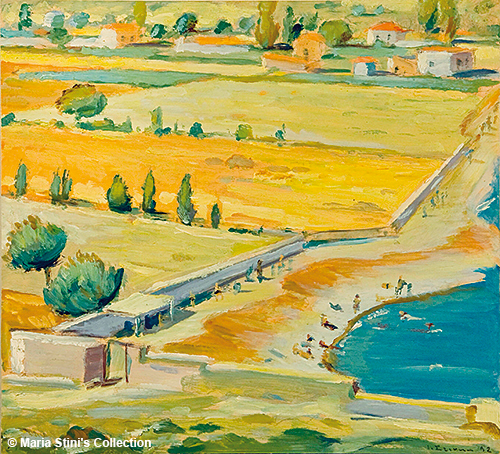
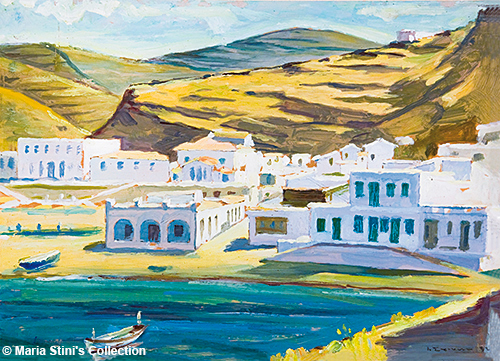
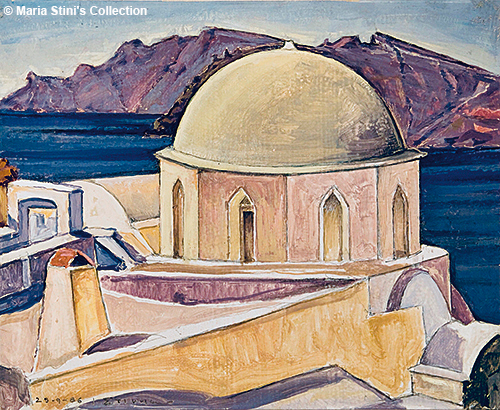
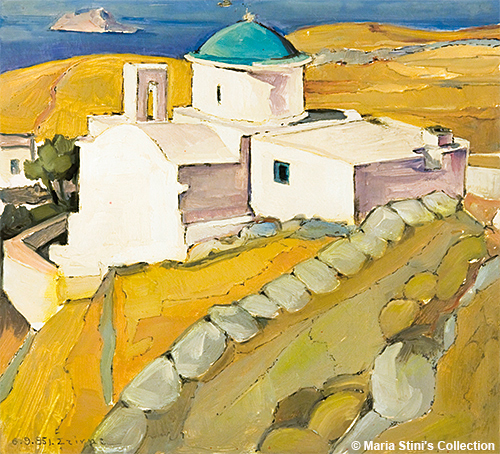
In other paintings, Stinis introduces a scenographic approach of the landscape, as if renewing his interest in it; this approach highlights the geometry, the descriptive details and the bright light of the scenes. The new approach, which touches on both natural and human-made elements, emerges in a series of paintings on the neighbourhoods of Megara (1981, fig. 12) or Sofikon (1980, fig. 13). In these paintings Stinis, besides rendering the landscape, elaborates on architectural elements (neoclassical motifs and more modern features) depicted in calm places, with which human presence (if existing) also resonates. Thus, in Megara (1981), Stinis outlines with detail and particular linearity the clay tiles on the roofs, the wooden window frames and the metal railings of picturesque houses. At the same time, he paints cracks and fractures on the walls, seeking to communicate a sense of everydayness and of the decay that comes with time.
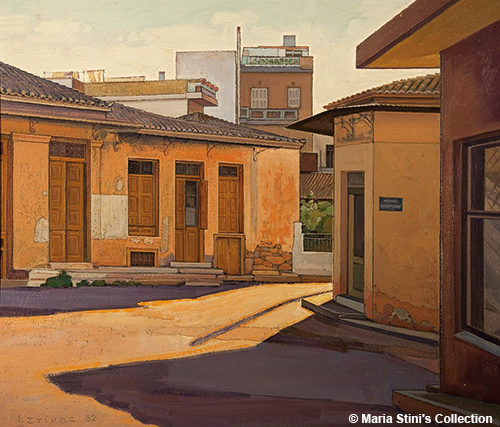
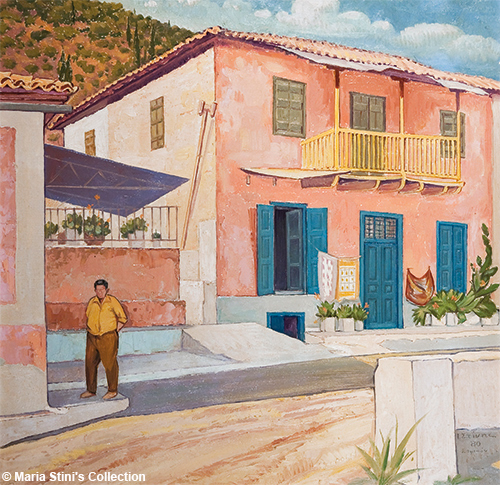
In 1980, Stinis revisits one of his older, more familiar themes, the Kerameikos site (fig. 14). This time, the ancient ruins are combined with an image of the modern urban landscape; the painter’s nostalgia for this place emerges through the darker tones in the painting. Almost 40 years after he first worked there as a drawing artist, Stinis seems to return as if to keep his memories alive.
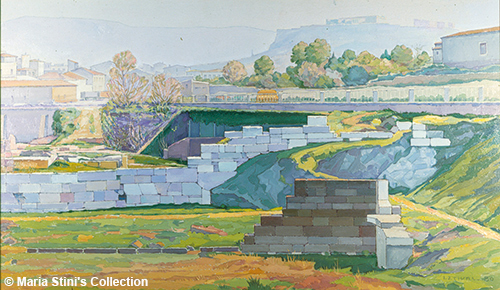
Works cited and further reading:
Χάρις Κανελλοπούλου, Γιάννης Στίνης. Πορεία στον χρόνο (Τράπεζα της Ελλάδος, Κέντρο Πολιτισμού, Έρευνας και Τεκμηρίωσης, 2022)
